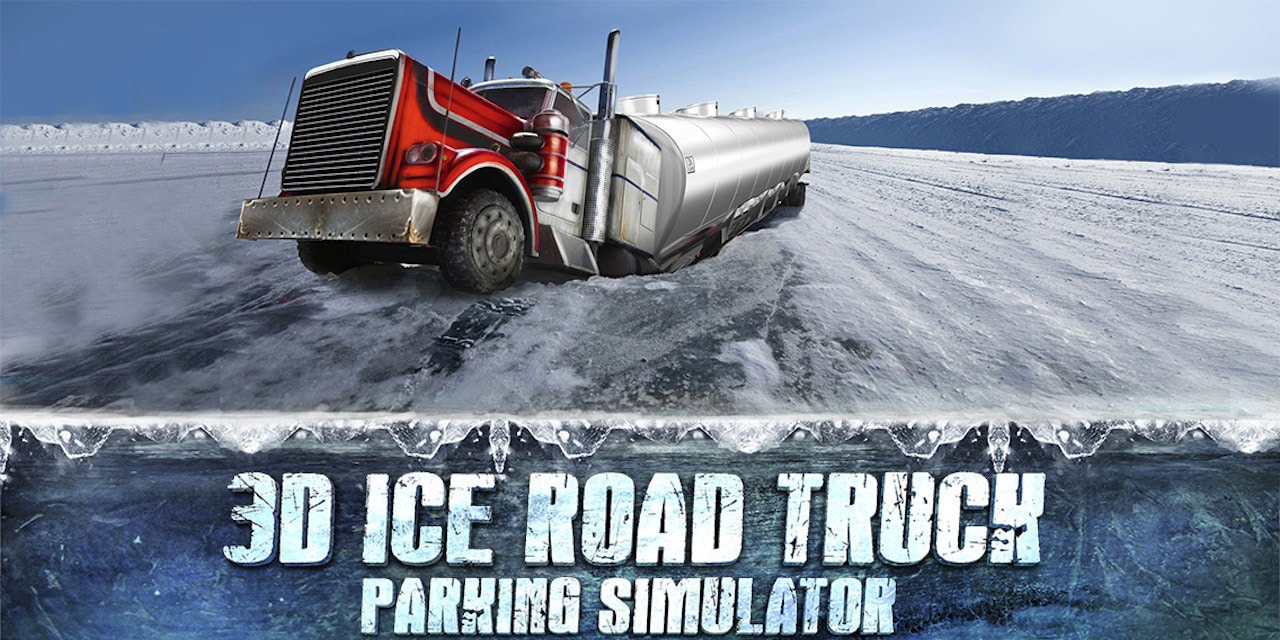Over 3.4 million people watched the premiere of “Ice Road Truckers” on 17 June 2007, making it the most-watched original television broadcast on History Channel since the network was launched in 1995. The reality TV series featured people whose job involved driving across thin ice over deep lakes in the remote Arctic region of Alaska and Canada to deliver critical supplies to cut-off communities, industrial sites, and diamond mines. After 11 seasons, the show was canceled and its loyal viewers were left wondering why. It received an Emmy nomination for Outstanding Cinematography for Nonfiction Programming in 2008.
About the show
How did it start?
In 2000, History Channel aired a documentary series called “Suicide Missions,” which featured the dangerous job of traversing an ice road or man-made structure running on a various frozen water surface in the Northwest Territories of Canada in one of its episodes entitled “Ice Road Truckers”.
https://www.facebook.com/iceroadtruckers/photos/a.407009811519/407009946519/
It was based on the non-fiction “Denison’s Ice Road,” by Edith Iglauer published in 1974. It was about the Canadian engineer, John Denison, who was said to have perfected the construction of ice roads in remote areas of the sub-Arctic that provided access to the mining camps and enabled heavy loads to be transported. The documentary gained a wide audience, and was received well after it was shown in the “Modern Marvels” series.
The network finally decided on producing a TV series based on the book, and tapped Thom Beers of Original Productions for this; he was also the executive producer of Discovery Channel’s hit series, “Deadliest Catch.”
Meet the original cast
Alex Debogorski
He’s a legend in ice road trucking, with about a quarter of a century experience of driving through and over the frozen lakes when the TV series debuted. He and his wife Louise, lived in Yellowknife, and have 11 children and many grandchildren.
Alex was the only cast member who appeared in all seasons of the show. He wrote a book about his adventures driving on ice entitled “King of the Road: True Tales from a Legendary Ice Road Trucker,” which was published in 2010. He easily became a fan favorite, as he liked to crack jokes and seemed to have an easygoing personality.
Hugh Rowland
A veteran in the ice road trucking business, Hugh earned the nickname, “Polar Bear,” which was said to be due to his overbearing personality. In season one, his wife Dianne shared that every time Hugh left his family to be on the ice road, she hated saying goodbye to him, knowing the risks of his job even if he had been doing this for over two decades. He filed a lawsuit in 2014 against the show and the producer, Will Morrison, for the injuries he sustained from an accident caused by Will’s reckless driving. Reportedly, it left him paralyzed from the waist down and as a result he couldn’t drive a truck, and prevented him from being intimate with his wife. He was fired from the show due to his false accusations, and didn’t make it past season eight.
https://www.instagram.com/p/CN0_CI-J0On/
Rick Yemm
He’s a driver from Kelowna who was on his second year as an ice road trucker when the show first aired. He was so scared the first time he was out on the road saying that there was nothing that could have prepared him for it. Rick quit and abandoned the truck after a disagreement with Hugh, his employer, over a malfunctioning floor heater in the truck. He wanted Hugh to have it fixed so he could haul loads without getting frostbite, but nothing was done.
Drew Sherwood
He’s a veteran truck driver but a rookie on the ice road. The 45-year-old Drew was confident of his skills, and said he had no problems adjusting to driving on ice, but ended in a ditch; he was unable to deliver supplies on time when he lost his batteries and battery box. Later, he had to abandon his load when he encountered problems with his onboard computer. Hugh, the owner of the truck, and his mechanic put the blame on Drew for most of the mechanical problems. Drew ended leaving ice road trucking. He was only a part of the series for two seasons.
https://www.youtube.com/watch?v=YJyV12Rtrvs
TJ Tillcox
He’s 21 years old in season one. TJ saw an advertisement for an ice road trucker in a newspaper and thought he could probably do it, as he had some trucking experience although not on the ice. He said the first time was nerve-wracking, but he soon got the hang of it. Before he got to the ice road, he had an accident when the brakes of his big rig failed to work, and he hit a light pick-up truck; he was cleared of the responsibility. Several days after that, he was airlifted off the ice to receive treatment for severe abdominal pain when he injured himself tying down a load. He only appeared in season one of the show.
Jay Westgard
The 25-year-old elite driver had seven years of experience driving on ice by season one. He was known for hauling the biggest and widest pieces up to the mines. Jay was part of the convoy delivering jet fuel to a remote area; it was said to be a risky job that most veterans turned down. He only appeared in season one.
“Ice Road Truckers”
The land of the indigenous people was said to have been the richest real estate in the world, as beneath the ice there was gold. After 60 years of production and yielding 375 tons of pure gold, they were shutting down as it was no longer cost-effective to mine the gold that was deep underground. However, it was discovered in the 1990’s that there were diamonds as well, estimated to be worth $40 billion, and subsequently Canada became the third leading diamond producer in the world. Operating mines in such an isolated place required heavy equipment, huge tanks, and millions of gallons of fuel, not to mention the supplies needed by the workers there. The TV series chronicled how people delivered what was needed to the mines 563km (350 miles) across the frozen lakes.
Yellowknife, the capital and only city in Canada’s Northwest Territories, was where all the supplies were being piled up and stored as the truckers await the opening of the gateway to the ice road. It was like a truck stop as drivers from all across North America would be coming in to deliver the goods.

The way to the mines from the city was impassable, as there were no surfaced roads, only lakes and ‘spongy permafrost.’ When the lakes froze, it becomes possible to cross.
Another way to get to the mines would be by ‘plane, but it was said to be much more expensive. Also, there’s no way some of the equipment they had to transport could fit or be carried by even a C130 Hercules. According to Alex, it was riskier too because ‘a plane was just a truck with wings.’
Building the ice road
The first vehicle to venture onto the frozen lake was a Hagglund used by the Swiss army, as it could float and has an escape hatch at the front and on top so one could bail out in case of a problem. It was used to pull ground-penetrating radar that could measure the thickness of the ice – when the ice became 16-inchesor about 40cms thick, then it would be ready for a snowplow to carve out a roadbed and expose the surface of the lake.
https://www.facebook.com/iceroadtruckers/photos/a.88725661519/10151469966131520/
The next phase was to pave the road with a thick covering of ice. Frigid water from the lake beneath was mixed with snow to make what they called ‘the quick-set concrete of the north.’ Next, the road was flooded, and as it freezes it formed another layer of protection. There would be at least 28 inches or about 70cms of ice that separated the truck from the water. It took about 30 days to build that stretch of ice road that would be ready for the big rigs and 18-wheelers, the construction costing about $10 million. Some roads were made with 50 inches of ice, so that they could withstand a much heavier load.
Preparing the road was not without its risks. Back in December 2004, it was said that a snowplow driver hit a patch of weak ice as he was clearing the road, and the plow dropped to the bottom of the lake. With a temperature of 35 below zero, the water re-freezes in a matter of minutes and could keep one from escaping the water.
Crossing the ice road
Before the truckers went past the gate, they had to undergo a urine test for drugs. Due to long hours on the road, as they had to continue driving until they reached their destination, so the temptation to take amphetamines to stay awake was strong.
The drivers had to transport 10,000 loads for 60 days before the ice road dissolved into slush and melted away. Sometimes the winter season was short, and the road would be closed two weeks earlier than usual. It was a race against the clock, as the mindset of every trucker was generally ‘the more loads, the more money, the more bragging rights.’ However, it didn’t mean they could drive as fast as they could, as they had to abide by the departure times given to them to keep the road from being overloaded, and there was also a speed limit that each driver must adhere to. As a semi-truck moved across the frozen lake, the ice bends under its weight and it would start a pressure wave in the water beneath the surface. If the driver went past the critical speed, the wave could become powerful enough to burst through the ice, and the guy who’s driving behind you could end up in that pool of water.
Alex was usually the first one to cross, as he’s considered to be a good luck charm because he’d completed every first run in the past without any problems. The first haul was the longest, to test the condition of the winter road.
Hugh and his drivers drove in a convoy, with him leading the way. In season one, he hauled massive mine equipment such as ore chutes and a water tank, which weighed nearly 29,000lbs, or about 12,000kgs. He was followed by Drew Sherwood with 18,500lbs, over 8,000kgs of bunk beds and then Rick Yemm with two 5,000lbs supply crates, over 2,000kgs each. Once the convoy started rolling, they didn’t stop for anything.
When spring came, the ice would melt from the bottom up causing the ice to get thinner. The drivers had no way of knowing this, as the surface looked the same, although they knew that it was just a matter of time before the road becomes impassable. However, they would still try to squeeze in one last run. Alex wanted to transport another load, but the dispatcher didn’t want him to go without a convoy; he convinced them that he could go solo since the load would be lighter. Hugh collided with another truck; he wasn’t injured, but the ammonium nitrate he was hauling was starting to spill, which caused the ice to melt faster; fortunately, they managed to contain it.

The truckers met their goal that winter road season, as they hauled in nearly 1100 loads with Hugh taking first place at 37 loads, beating Alex who managed 36 runs.
Dangers in ice road trucking
People were drawn to the mystique of the ice road because of the danger. The rewards were great, as it was said that drivers could make a year’s income in eight to 10 weeks. One just had to overcome the fear of being on the road for hours, accompanied by the sound of ice cracking, which they said was a good thing because it re-freezes. The drivers could see it too, as it looked like lightning strikes on the ice. It was still downright scary, especially at night when one could hear but not see much of what was happening.
Hugh recalled a time when he took a guy out on the road, only for the latter to park his truck at the mining camp and asked to be flown out of the place because he was too scared to drive back across the ice.
Then there were those who would only last a year – he said that this was what separated the men from the boys.
When there’s a whiteout or blizzard, there would be zero visibility, so there was no way to know if one was still on the right track. There was also the danger of freezing to death, as the temperature could drop to 40 below zero.
It’s important to winterize their truck, and pay particular attention to the air brake system. Moisture in the air lines was a problem as it could freeze, and the ice could mean that the brakes would fail. During the first season, Alex heard an alarm that indicated something wrong with the air dryer. He kept hearing it so he had to get under the truck to check and fix it every time. He couldn’t kill the engine because he needed to keep himself warm, but the truck shouldn’t idle for long either, because the vibration and weight could break through the ice if stationary for too long.
https://www.facebook.com/iceroadtruckers/photos/a.88725661519/10153883601041520/
Alex said that a trucker could minimize the danger of driving on the ice road if he or she followed all the rules that were set in place to keep everyone safe.
Cancellation of “Ice Road Truckers”
After the “One Last Lick” episode of season 11 was aired on 9 November 2017, fans waitiedfor news on the airing of season 12, but none came.
Alex, who had been a mainstay of the show, wasn’t informed of the network’s plans for the TV series, as he posted a statement on his Facebook page in March 2018: ‘Those TV guys from Hollywood are a bunch of bums! You would think they would call and say kiss my rear, hello…I guess the show is in the dust bin of history [pun intended].’ Although ice road trucking was something he did for a living, whether there was a camera or not, his fans felt that he should have been given the courtesy of knowing if the show was canceled.
Rumors that “Ice Road Truckers” would not be renewed circulated online, as an entertainment insider was said to have shared that the cancellation was definite. However, when a viewer wrote on the show’s Facebook page to ask about its status, the reply was, ‘Ice Road Truckers on HISTORY We’re not sure yet, but don’t get left in the cold.’ History Channel’s vice president for public relations said in an email, ‘no decision has been made yet on future seasons of Ice Road Truckers.’
The official Facebook page of “Ice Road Truckers” is still up, but all that was posted were promotions for other shows on History Channel. Despite numerous requests from fans in the comments section for the return of their favorite series, there was no positive response from the network. No one knew why the show wasn’t renewed for season 12. The most probable reason that the fans could come up with was that the series no longer dominated TV ratings. Some said it was probably replaced by “Truck Night America,” which premiered in 2018.
So fans will have to be satisfied with accessing the series in History Channel’s library, still a most enjoyable watch!







Leave a Comment